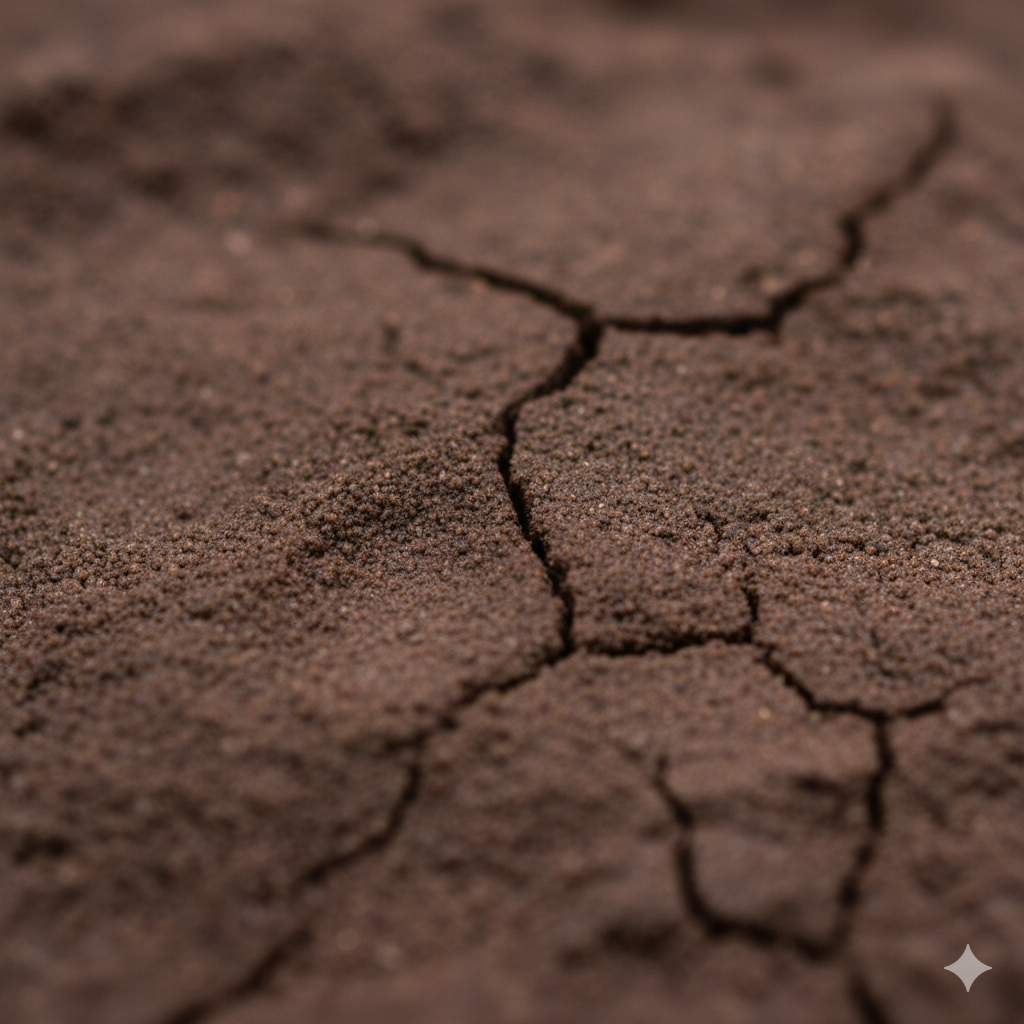Clay Soil

Very fine particles and tiny pores; holds water and nutrients well but drains slowly and compacts easily.
🧱 Texture, Drainage & Fertility
Texture: sticky when wet, hard when dry
Drainage: poor to moderate
Fertility: high (but locked if waterlogged)
Organic Matter: moderate
Tendencies: compaction, waterlogging, surface cracking
🧪 pH
Typical pH Range: 6.0–7.5 (varies)
✅ Best Suited For
- Rice paddies (with standing water)
- Many fruit trees once established
- Leafy vegetables in dry season with raised beds
⚠️ Not Ideal For
- Root crops needing loose soil (carrot) unless heavily amended
🛠️ Amendments & Improvements
- Add coarse compost, rice hulls, or fine bark to improve structure
- Create raised beds; avoid working when wet
- Gypsum can help flocculate certain clays (non‑sodic)
🪴 Recommended Container Mix
35% compost, 35% coco coir, 30% perlite/pumice; avoid heavy garden clay in pots.
🔍 Diagnostics
Hand Test: Forms a strong ribbon >5 cm; very plastic when wet.
Jar Test: >40% clay layer; slow settling; cloudy water.
🐛 Common Issues & Fixes
- Waterlogging and root rot: Switch to raised beds; add coarse organic matter; ensure drainage channels.
- Hardpan formation: Deep mulch and biological tillage with deep‑rooted cover crops.
💡 Care Tips
- Never till when wet—wait until it crumbles
- Maintain permanent mulch to buffer wet/dry cycles
🌦️ Malaysia Notes
Heavy monsoon rain exacerbates puddling—raised beds and surface mulch are essential.
Note
Use these profiles as practical guides. Local site conditions vary—observe water infiltration, plant responses, and adjust amendments accordingly.